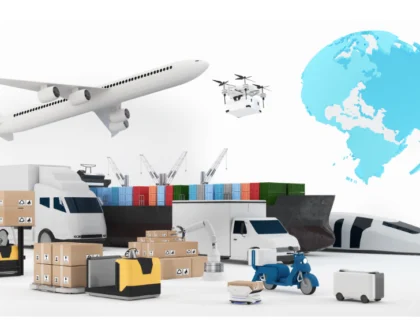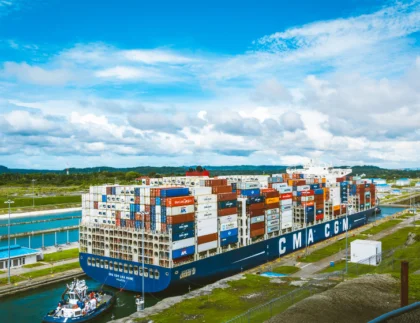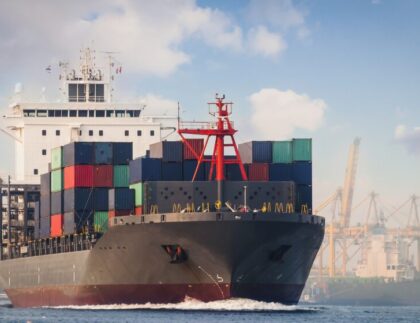
The supply chain crisis has plunged businesses into the rough and uncharted waters of global business.
Even though logistics have been disrupted, there exist labor shortages and scarcities of raw materials that most industries face like a mushrooming challenge; these interconnected issues have exposed vulnerabilities within the global supply chain, emphasizing the need for resilient and adaptable strategies to navigate this unprecedented disruption,. however, businesses that can adapt strategically will not only ride this storm out but emerge from it a lot stronger.
In this light, this article provides practical advice to businesses in the supply chain business for sailing with resilience and growth.
The crisis of the current supply chain goes back to several related factors: disruption in factory operations, the closure of ports, and labor shortages during the pandemic have caused devastating delays and undermined production capabilities.
Logistics bottlenecks began after a spike in demand for goods, an increase in the use of shipping containers, and backed-up ports that had all exerted pressure on the logistics networks. Geopolitical tensions over trade wars and tariffs have made international trade even more complex.
Additionally, the natural calamities resulting from climate change have exacerbated both the cases of extreme weather, which disrupt both demand and supply chains, further highlighting the fragility of the global supply chain. In all these, the underlying causes are all that the business needs to understand to devise proper strategies. Effective supply chain management is based on visibility.
Technologies, such as IoT devices, blockchain, and enhanced analytics, invested in by a business, would provide real-time data on inventory levels, status, and disruptions foreseen in shipping. For example, the use of IoT devices could be optimized for condition monitoring and tracking of items under transit, and blockchain improves the visibility and traceability of supply chain information.

Advanced analytics also aid in demand forecasting and even the projection of potential chokepoints. This, aside from creating strong ties with suppliers, may allow for early warning regarding the occurrence of disruptions. Communicating regularly and devising contingency arrangements together can also minimize risks.
Strategies for enhancing communication and collaboration include those that are implemented in Supplier Relationship Management (SRM). Multi-sourcing or splitting suppliers trims the dependency on one source.There are still other ways companies can enhance the management of their inventory. including demand forecasting, inventory optimization, and the implementation of advanced inventory management systems. Examples of such ways include; the implementation of the Just-in-Case (JIC) inventory strategy.
JIT inventory systems reduce holding costs at the expense of vulnerability to disruption. JIC maintains more significant inventories of important components to buffer supply chain shocks.

It can be achieved by estimating the right safety stock and excess stock of items with high demand or items that take a long time to produce. The combination of data analytics can also come in the form of demand forecasts for optimal inventory levels.
Analytics will find applications in use with Inventory Optimization software that estimates the levels of inventory correctly given data and the type of analytics used in getting a better estimation. The demand forecast uses historical data, market trends, and predictive analytics to come up with realistic estimations.
The inventory optimization software ensures that the maintained inventory levels are not too high, but in no manner less. Effective transportation ensures there is smoothness in the chain of supply. It is also helpful in reducing delays and costs due to the optimization of transport routes.
The TMS supports auto-routing and also optimizes freight. Besides, the routing is dynamic, meaning changing all possible routes when there is traffic or the weather, among other things.
Improvements in last-mile delivery need to be brought about because it remains a critical bottleneck. Improvement in last-mile logistics presents itself in the form of better customer satisfaction because deliveries are on time.
This could be achieved by creating smaller, localized distribution centers and adopting gig economy workers for flexible delivery solutions. A skilled workforce can adapt better to any alterations in conditions. Besides investment in continuous training, which empowers employees to deal with new technologies and processes, these employees have adapted.
This can be achieved by constantly running new tools and methodologies workshops and training along with cross-training the employees for multiple roles to enjoy flexibility. Retaining experienced employees is another important issue to guarantee operational continuity.
This will involve ensuring that employees are competitive in wages and benefits, as well as maintaining a healthy balance of work and life so that they are not burned out. Working with logistics partners will provide a kind of extension of flexibility and access to expertise.
Here, companies may enlist the services of 3PL providers for warehousing , transportation, and logistics management. They will probably turn to freight forwarders because of their ability to navigate the complex shipping routes and regulations that govern this industry.

In these cases, firms can then use industrial networks and trade associations as there is a more prominent exposure to insights, therefore this would allow the companies to collaborate with peers. Best practice and knowledge exchange: 3PL providers can also be leveraged to enhance supply chain visibility and optimize logistics operations.
Through industry forums, businesses can then share best practices and knowledge between peer organizations. Public-private partnership: collaboration between the government and industry bodies by seeking their support and resources.
Growing importance of sustainability in supply chain management: Sustainable practices improve not only resiliency but also reputation. By using such strategies as recycling and reusing materials, circular supply chains will go a long way in the use of green logistics solutions—ecologically friendly transportation and packaging.
Moreover, focusing on sustainable import logistics practices, such as optimizing transportation routes to reduce emissions and minimizing packaging waste, can contribute significantly to a company's overall environmental footprint.
These environmentally conscious efforts contribute to the development of sustainable supply chain solutions, enhancing a company's overall sustainability profile and attracting eco-conscious consumers.
These are monitoring and reduction of the environmental impact from the supply chain's operations, reducing the capability of risks while increasing the level of sustainability.
Tools to track and minimize carbon emissions come under the functions that source from an environmentally responsible supplier.
The supply chain crisis provides enormous challenges while simultaneously offering opportunities to innovate and bolster operations. And businesses can then best weather these disruptions, and be on a strong footing in the short term, with improvements in visibility, inventory management, and the streamlining of logistics. Of course, such strategies require being proactive and agile.
After adapting with the supply chain crisis, businesses will be ready enough to meet up with customer demand and the new dynamics in the market, and also to sustain growth through sustainability.
Implementing robust supply chain solutions will be crucial for long-term success in this dynamic environment.

If you have goods to be shipped to the UK, Europe, and the USA, please contact us in advance and prepare the relevant freight information! PGS Logistics offers a full range of logistics services from freight booking to freight delivery!











